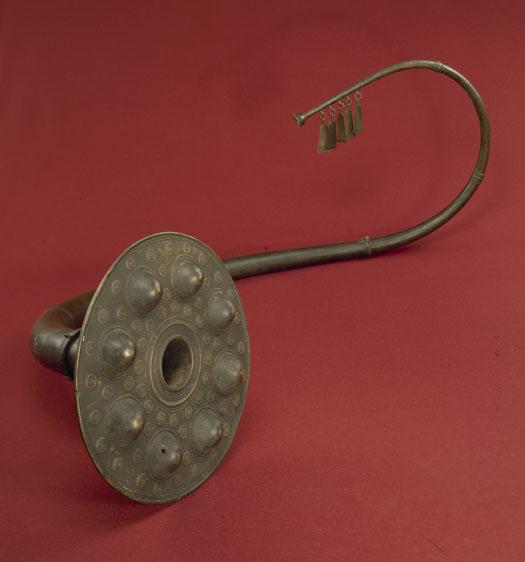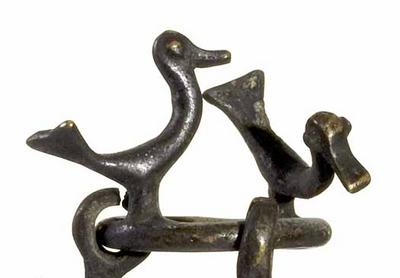The lurs and their music
A lur is cast in bronze. At one end of the tube there is a mouthpiece and at the other an ornamental plate. The ornamental plate is often decorated with between six and ten round depressions – eight is the usual number. Some lurs have small rattling-plates at the mouthpiece or the ornamental plate, and some have a carrying-chain. The lurs are masterpieces of casting. Musically they are more simple. Even today at least twelve of the Danish lurs can be played. Their sound is pleasant and sonorous. When present-day musicians blow the lurs they are able to produce between eight and twelve natural notes. How the lurs sounded when they were used for religious ceremonies we do not know. Perhaps they were used to put the listeners in a trance-like state? The lurs were probably accompanied by other instruments. Pan pipes and rhythmic instruments are known from areas south of the Baltic. The small rattling-plates that are attached to some of the lurs could also make a sound. The religious music of the Bronze Age may have been very varied.



